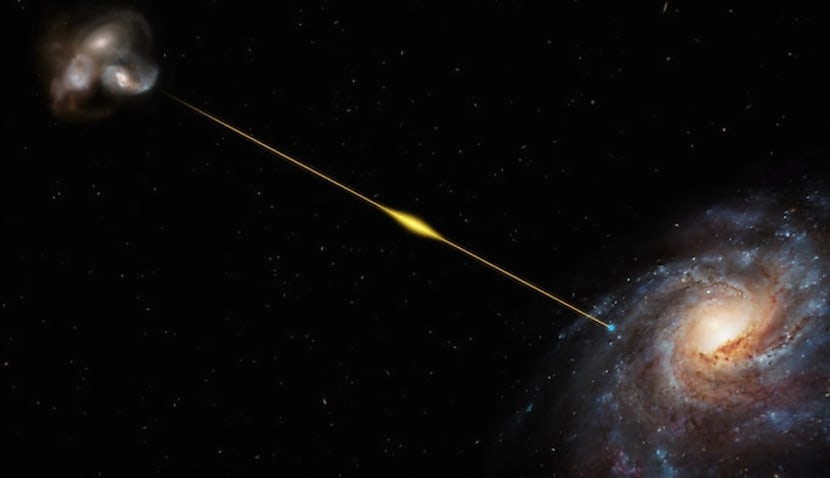Macquarie University’s Dr Stuart Ryder and Swinburne University’s Ryan Shannon now believe their breakthrough confirms that the phenomenon can be used to measure the “missing” matter between galaxies.
Fast radio bursts (FRB) are intense bursts of radio emission that can last just milliseconds and were only first detected in 2007.
The exact processes that cause them have long been shrouded in mystery, but they’re often recorded in colliding galaxies that create the massive stars usually necessary to generate the bursts.
The two Australian researchers first used CSIRO’s 36-dish ASKAP telescope to make the discovery, which they believe was created in a cosmic event that released, in milliseconds, the equivalent of our sun’s total emission over 30 years.
“Using ASKAP’s array of dishes, we were able to determine precisely where the burst came from,” said Dr Ryder.
“Then we used the European Southern Observatory (ESO) Very Large Telescope (VLT) in Chile to search for the source galaxy, finding it to be older and further away than any other FRB source found to date, and likely within a small group of merging galaxies.”
Called FRB 20220610A, the discovery has reaffirmed the concept of weighing the universe using data from FRBs.
This was first demonstrated by the late Australian astronomer Jean-Pierre “J-P” Macquart in a paper in Nature in 2020.
“J-P showed that the further away a fast radio burst is, the more diffuse gas it reveals between the galaxies,” said Dr Ryder.
“This is now known as the Macquart relation. Some recent fast radio bursts appeared to break this relationship. Our measurements confirm the Macquart relation holds out to beyond half the known universe.”
About 50 FRBs have been pinpointed to date – nearly half using ASKAP.
“While we still don’t know what causes these massive bursts of energy, the paper confirms that fast radio bursts are common events in the cosmos and that we will be able to use them to detect matter between galaxies, and better understand the structure of the universe,” said associate professor Shannon.
The ASKAP telescope – or Australian SKA Pathfinder telescope – opened in Western Australia in 2012 and is intended to provide a “big picture” view of the universe.
It means that instead of studying a few objects in detail, it can catalogue millions of new galaxies and other astronomical sources.
“ASKAP has 36 dish antennas that work together as one telescope,” explains CSIRO.
“The antennas stand three storeys tall, each with a 12-metre-wide dish, and they are dotted across the outback over an area of about six square kilometres.
“Critical to ASKAP’s unique capability is a novel radio ‘camera’ called a phased array feed receiver, located at the apex of each antenna.
“ASKAP generates data at the rate of 100 trillion bits per second – more data at a faster rate than Australia’s entire internet traffic.
“At the heart of ASKAP is the ‘correlator’, a high-speed digital signal processing system that extracts astronomy signals from this massive amount of data.
“Using the Pawsey Supercomputing Research Centre and custom-written software, we produce science-ready datasets of many terabytes for each observation, served to astronomers through ASKAP’s science archive.”
While ASKAP is arguably the best telescope to detect FRBs, international telescopes now under construction in Western Australia and South Africa will be even better at allowing astronomers to locate even older and more distant FRBs.

Adam Thorn
Adam is a journalist who has worked for more than 40 prestigious media brands in the UK and Australia. Since 2005, his varied career has included stints as a reporter, copy editor, feature writer and editor for publications as diverse as Fleet Street newspaper The Sunday Times, fashion bible Jones, media and marketing website Mumbrella as well as lifestyle magazines such as GQ, Woman’s Weekly, Men’s Health and Loaded. He joined Momentum Media in early 2020 and currently writes for Australian Aviation and World of Aviation.

